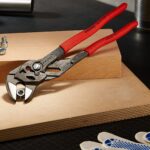Keeping your pool sparkling clean is essential for enjoyable swims and a healthy environment. One of the most effective tools for maintaining your pool’s cleanliness is a pool vacuum. Whether you’re a seasoned pool owner or just starting out, knowing how to hook up your pool vacuum can save you time and effort.
Understanding Pool Vacuums
Pool vacuums play a crucial role in maintaining pool cleanliness and hygiene. Familiarity with different types of vacuums and their benefits enhances your pool care routine.
Types of Pool Vacuums
- Manual Pool Vacuums
Manual vacuums require you to physically guide them along the pool floor. They consist of a hose, a vacuum head, and an attachment for your pool pole.
- Automatic Pool Vacuums
Automatic vacuums operate without manual effort. They can be divided into three categories:
- Suction-side vacuums rely on your pool’s filtration system, providing an economical option.
- Pressure-side vacuums use water pressure, collecting debris in a separate bag.
- Robotic vacuums are self-contained units that navigate the pool floor and walls, providing comprehensive cleaning.
- Skimmer Vacuums
Skimmer vacuums attach to the pool skimmer and vacuum debris as water is drawn through the skimmer basket. This setup is suitable for light cleaning tasks.
Benefits of Using a Pool Vacuum
- Enhanced Cleanliness
Regularly vacuums remove dirt, leaves, and debris, ensuring a cleaner swimming environment.
- Improved Water Quality
Vacuuming helps maintain balanced water chemistry by removing contaminants, leading to better clarity and sanitation.
- Reduced Algae Growth
By eliminating organic matter, vacuums minimize the potential for algae blooms, promoting a healthier pool ecosystem.
- Time Savings
Using a vacuum saves time compared to manual cleaning methods, allowing you to enjoy your pool more.
- Prolonged Equipment Lifespan
Regular vacuuming prevents the buildup of debris in the filtration system, extending the life of your pool’s equipment.
Preparing to Hook Up Your Pool Vacuum
Preparation is essential for an effective pool vacuum setup. Follow these steps to ensure a smooth process.
Gathering Necessary Equipment
Collect the following equipment for hooking up your pool vacuum:
- Pool vacuum: Choose a type that suits your needs, such as manual, suction-side, pressure-side, or robotic.
- Hoses: Ensure you have enough hose length to reach all corners of your pool.
- Vacuum head: Select a vacuum head compatible with your vacuum type.
- Skimmer or dedicated suction line: Check that your pool has one available for connecting the vacuum.
- Brushes: Use brushes for pre-cleaning the pool walls and surface if needed.
- Weights: Consider using weights to keep hoses submerged and prevent tangling during vacuuming.
Safety Precautions
- Turn off power: Always shut down the pool pump and any connected equipment before connecting the vacuum.
- Check hoses: Inspect hoses for signs of wear or damage to avoid leaks.
- Wear gloves: Use pool gloves while handling equipment to protect your hands.
- Avoid running on slippery surfaces: Watch your footing around the pool area to prevent accidents.
- Use a GFCI outlet: Ensure that your vacuum operates via a Ground Fault Circuit Interrupter to reduce electrical hazards.
Step-by-Step Guide to Hooking Up Your Pool Vacuum
Hooking up a pool vacuum involves specific steps for optimal performance. Follow this guide for efficient and effective vacuuming.
Connecting the Hoses
- Choose the appropriate hose length based on your pool’s size and shape.
- Connect one end of the vacuum hose to the vacuum head.
- Submerge the hose entirely in the pool to remove air; keep one end at the deep end of the pool.
- Attach the other end of the hose to the skimmer or dedicated suction line, ensuring it’s secure.
Attaching the Vacuum Head
- Position the vacuum head at the pool’s bottom.
- Align the vacuum head with the connected hose.
- Carefully insert the hose into the vacuum head until it clicks into place.
- Ensure suction exists by observing bubbles rising in the water.
Adjusting the Pool Filter
- Set your pool filter to the “Vacuum” or “Bypass” setting.
- Verify that the skimmer or dedicated line remains unobstructed to optimize water flow.
- Monitor the pressure gauge; if it’s too high, backwash or clean the filter.
- Check for consistent suction, adjusting the return jets if necessary to improve efficiency.
Troubleshooting Common Issues
Common issues can arise when using a pool vacuum. Addressing these problems quickly ensures your pool remains clean and well-maintained.
Problems with Suction
Reduced suction can significantly impact vacuum performance. To troubleshoot suction issues, follow these steps:
- Check Hose Connections: Ensure all hose connections are secure. Loose connections can allow air to enter the system, disrupting suction.
- Inspect Hose for Blockages: Look for debris or obstructions inside the hose. Clear any blockages to restore optimal water flow.
- Examine Filter: A dirty or clogged filter impairs suction. Clean or replace the filter cartridge as needed.
- Adjust Valve Settings: Verify the valve settings on the suction side; incorrect settings can lower suction strength.
- Monitor Water Level: Ensure the water level is sufficient for vacuum operation. Low water levels can lead to decreased suction.
Leaks in Hoses
- Inspect Hoses Thoroughly: Check for signs of wear, cracks, or holes. Pay close attention to joints and fittings, as these are common leak points.
- Perform a Water Test: Submerge sections of the hose to look for bubbling, which indicates a leak. Mark any identified spots for repair.
- Use Hose Repair Kits: For minor leaks, a hose repair kit can provide a quick fix. Follow the instructions to seal the leak effectively.
- Replace Damaged Hoses: If significant damage is present, replacing the affected hoses ensures optimal performance.
- Check for Proper Alignment: Misaligned hoses can cause stress and lead to leaks. Ensure all hoses are correctly aligned and adequately supported.
Conclusion
Hooking up your pool vacuum doesn’t have to be a daunting task. With the right preparation and knowledge, you can ensure your pool stays clean and inviting. Remember to follow the steps carefully and troubleshoot any issues promptly to maintain optimal performance.
By investing a little time in setting up your vacuum correctly, you’re not just enhancing the cleanliness of your pool but also contributing to a healthier swimming environment. Keep your equipment well-maintained and stay proactive about your pool care. Enjoy your sparkling clean pool all season long.


